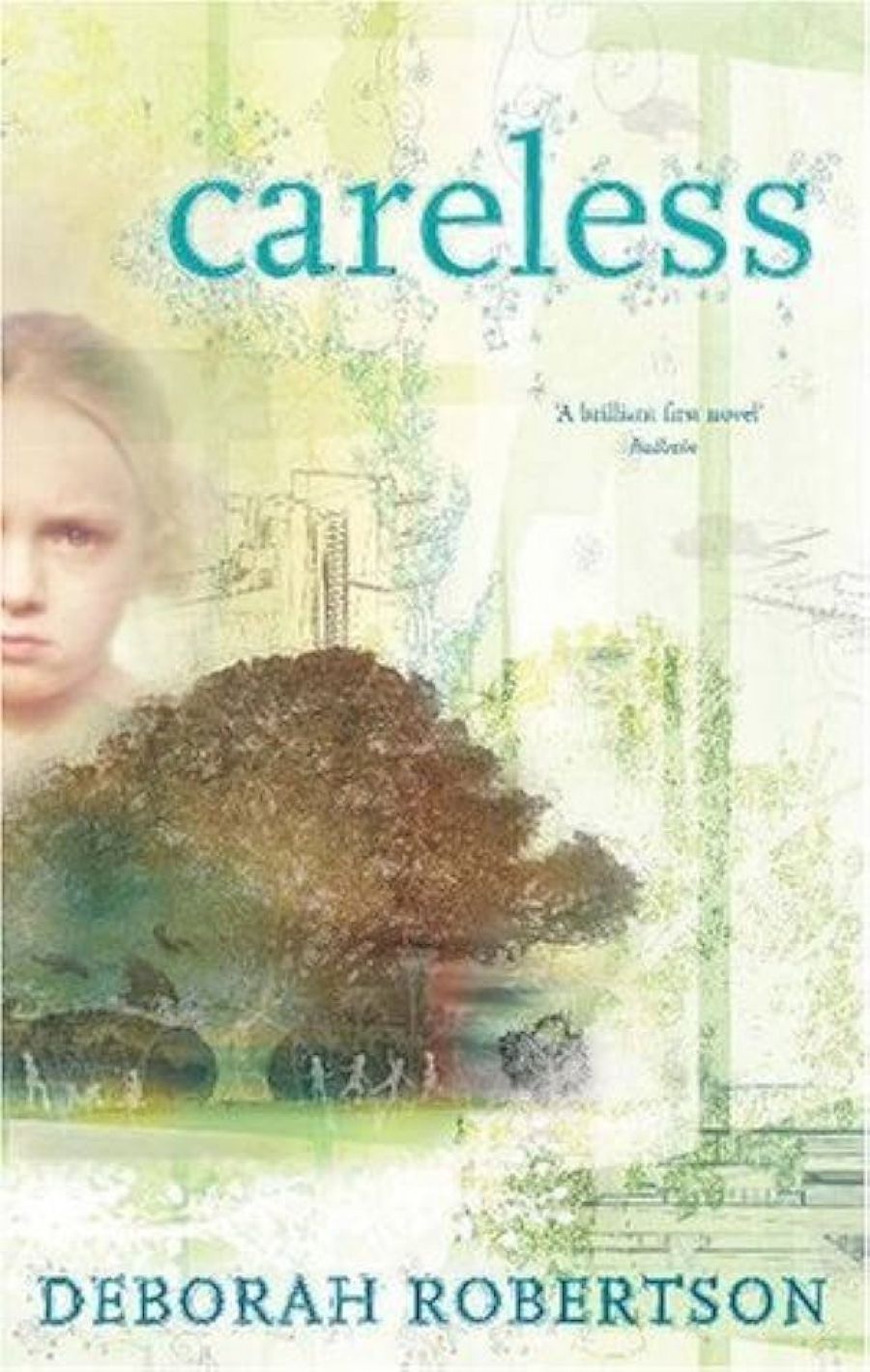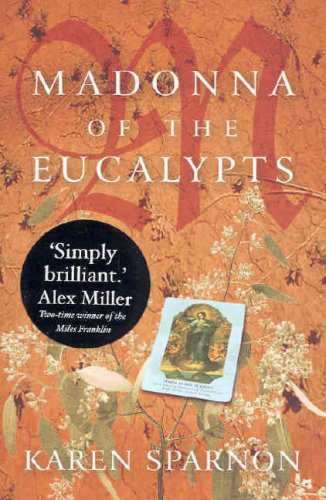
- Free Article: No
- Contents Category: Fiction
- Review Article: Yes
- Article Title: The wages of dying
- Online Only: No
- Custom Highlight Text:
The first thing about Deborah Robertson’s first novel, Careless, that strikes the reader is the way that her prose style cuts like sand. The story of three individuals united by the murder of six children is compelling, but what impresses is Robertson’s love of language, the precision of her sentences, as well as her gentle philosophical imagination and the deeper questions her book seeks to answer.
- Book 1 Title: Careless
- Book 1 Biblio: Picador, $32.95 pb, 293 pp
- Book 1 Cover Small (400 x 600):

- Book 1 Cover (800 x 1200):

- Book 2 Title: Madonna of the Eucalypts
- Book 2 Biblio: Text, $22.95 pb, 261 pp
- Book 2 Cover Small (400 x 600):

- Book 2 Cover (800 x 1200):

Eight-year-old Pearl is the true child observer. A sensitive, adult-like soul, she watches the world with a pang as she learns, for the first time, what real loss means. As Pearl and her ‘careless’ mother, Lily, attempt to come to terms with the murders, their lives become linked with two strangers: Sonia, the widow of a famous furniture maker; and Adam, a controversial, somewhat arrogant, young artist, renowned for his marble sculpture of a young addict, cast just moments after her death. When a forum is held about the construction of a memorial to the dead children, Adam attends in hopes of winning the commission. There he meets Lily, with whom he soon begins a sexual relationship. Adam rents out a work shed owned by Sonia, who is attempting to stave off loneliness. Her two sons live overseas, and she has never met her grandchildren. Her husband, Pieter, has left her a legacy of objects that recall their lives together, but when a planned retrospective of his work empties her home of even their marriage bed, she is troubled by the question of what remains. Careless is haunted by bodies reduced to and transcended by art. The novel poses desperate questions, not moral but mortal: how do we celebrate a life through or beyond death; how can we balance the dual impulses to mourn a loss and celebrate a life? Sonia’s days seem an agony of moments to be endured before the escape of her nightly sleeping pill. She is constantly invaded by memory, overwhelmed even as she attempts to make a meal or pour a glass of water. Meanwhile, Adam is haunted by the sense that his work is nothing more than a form of controversy. He yearns to solve the meaning of death by capturing the penultimate moment in porcelain (which can be made from the ashes of human bones). Surely, if he can sculpt mortality, he will be assured a kind of immortality?
The narrative of the artist in search of inspiration, something to awaken him, has the existential drive of a thriller – but ultimately, even art is just ephemera. In this way, the book’s philosophy of life is melancholy – not pessimistic, but Buddhist, perhaps, in the larger sense. Careless seeks to come to terms with how to hang onto dying things, ultimately realising that you cannot. In its most hopeful moments, as the American poet Galway Kinnell acknowledges, ‘The wages of dying is love’.
Robertson’s prose has been well honed, polished to shine. It has the capacity to shift suddenly, to form unexpected shapes from a thousand glittering grains. But the novel’s ending is ultimately dissatisfying. As the book unfolds its passionate questions, it builds to what seems an inevitable dénouement: transcendence or failure. Yet this hovering question is left unanswered, our leading characters are wrenched away, leaving us bereft among those we don’t particularly care about. Perhaps that is what Robertson is trying to say about death: the living are abandoned. But it would be more fulfilling to spend the book’s final moments with the characters we actually care for.
Karen Sparnon’s first novel, Madonna of the Eucalypts, also concerns itself with love and loss, but its prose is more akin to that of a fairy tale or fable. The story follows three generations of two families between 1896 and 1946 as they migrate from Palermo to the small Italian fishing island of Salina, and finally to Mildura. The novel is well-grounded in the lore of the Catholic faith: its mysteries, myth-ologies and miracles; the rituals of feast days; the love of the island heritage; and, ultimately, the search for belonging and home.
Delfina and Nino are childhood friends and destined to marry. While Delfina is happy on her island, Nino has a more migratory soul. He sails to Australia in search of a different fortune, promising Delfina he will send for her and their two daughters. The years pass: Delfina falls in love with another childhood friend, Paolo, and flees to Australia – and Nino.
Sparnon manages to capture the detail of island life, and provides insight into what it must have been like for migrants. In exploring how Delfina makes a new life for herself in Australia, while never entirely letting go her true home, Sparnon reveals how geographical schizophrenia might rewrite the psyche – this is the sad truth of the book.
Madonna of the Eucalypts will certainly appeal to those connected to the world it explores, and others will admire its grace, but its simplicity can grate. Sparnon has a Chekovian need to set the scene before the action can begin, and the dialogue is often melodramatic. There are scenes where characters who have been apart for years reunite and immediately say everything they have felt, without pause or introduction, without the stumbling, stammering, inexpressible rhetoric of love. The story has the simplicity of lore, but its language feels somehow empty, as if not truly felt. This is a common fault of the historical novel, which tends to romanticise the past in a way that does not allow for the fact that people essentially struggle to express themselves – whether it is 1936 or 2006. In life, happy endings are scarce when two characters burdened by the past find themselves in a room together. Although fine books can be written in the simplest language, Madonna of the Eucalypts is not sufficiently insightful to realise its ambition.


Comments powered by CComment